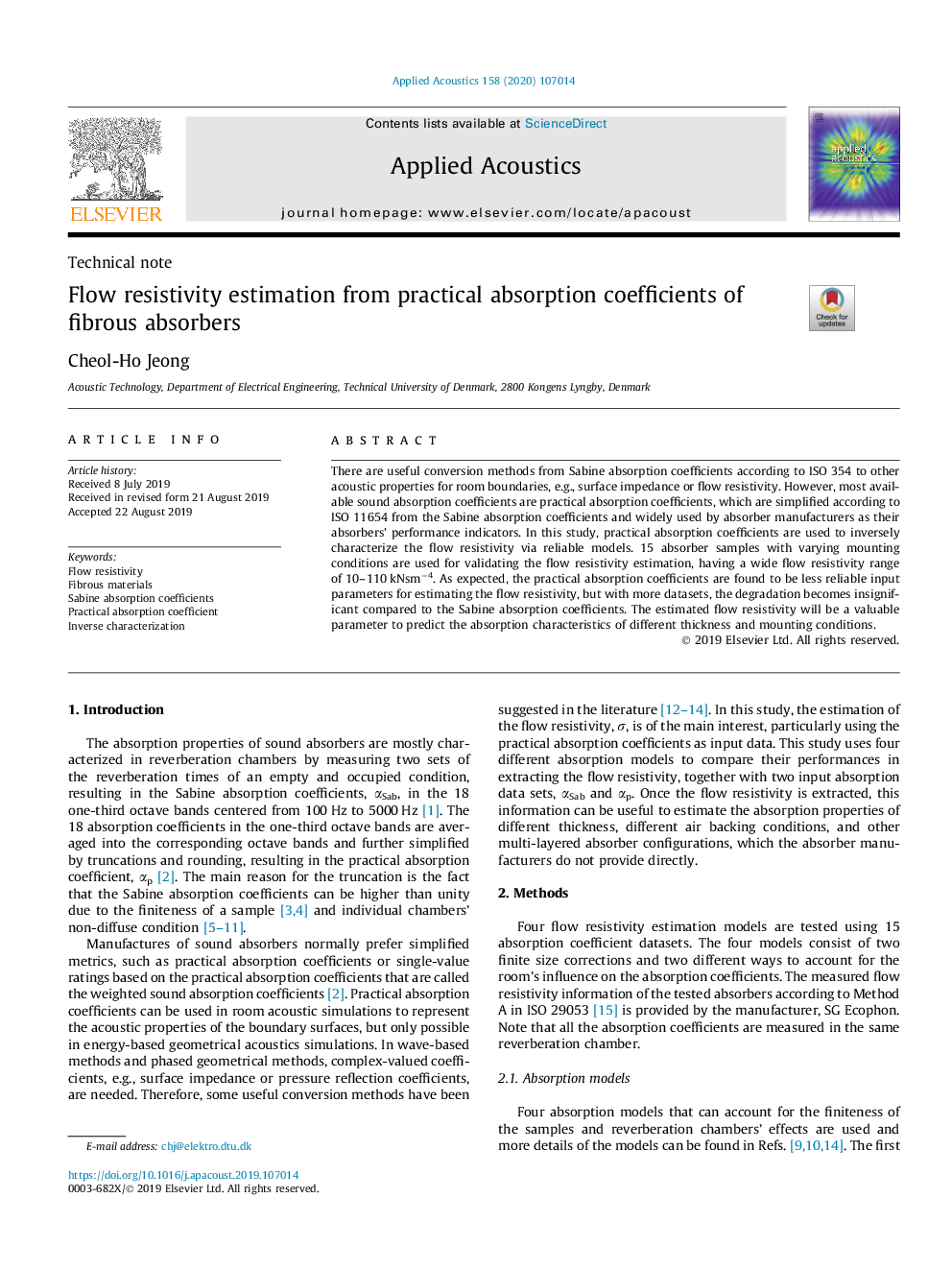| Article ID | Journal | Published Year | Pages | File Type |
|---|---|---|---|---|
| 13449675 | Applied Acoustics | 2020 | 6 Pages |
Abstract
There are useful conversion methods from Sabine absorption coefficients according to ISO 354 to other acoustic properties for room boundaries, e.g., surface impedance or flow resistivity. However, most available sound absorption coefficients are practical absorption coefficients, which are simplified according to ISO 11654 from the Sabine absorption coefficients and widely used by absorber manufacturers as their absorbers' performance indicators. In this study, practical absorption coefficients are used to inversely characterize the flow resistivity via reliable models. 15 absorber samples with varying mounting conditions are used for validating the flow resistivity estimation, having a wide flow resistivity range of 10-110â¯kNsmâ4. As expected, the practical absorption coefficients are found to be less reliable input parameters for estimating the flow resistivity, but with more datasets, the degradation becomes insignificant compared to the Sabine absorption coefficients. The estimated flow resistivity will be a valuable parameter to predict the absorption characteristics of different thickness and mounting conditions.
Keywords
Related Topics
Physical Sciences and Engineering
Engineering
Mechanical Engineering
Authors
Cheol-Ho Jeong,
